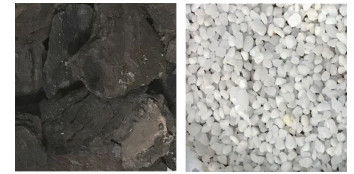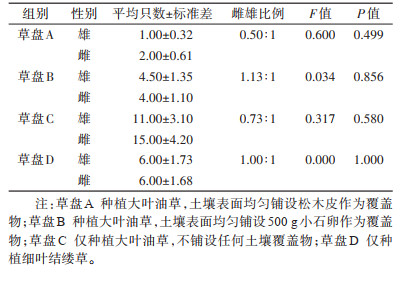| [1] |
虞以新. 中国蠓科昆虫[M]. 北京: 军事医学科学出版社, 2006: 1647-1649.
Yu YX. Ceratopogonidae of China[M]. Beijing: Military Medical Science Press, 2006: 1647-1649.
|
|
| [2] |
Strickman D, Wirtz R, Lawyer P, et al. Meteorological effects on the biting activity of Leptoconops americanus (Diptera: Ceratopogonidae)[J]. J Am Mosq Control Assoc, 1995, 11(1): 15-20. |
|
| [3] |
Tabachnick WJ. Culicoides and the global epidemiology of bluetongue virus infection[J]. Vet Ital, 2004, 40(3): 144-150. |
|
| [4] |
Velthuis AGJ, Saatkamp HW, Mourits MCM, et al. Financial consequences of the Dutch bluetongue serotype 8 epidemics of 2006 and 2007[J]. Prev Vet Med, 2010, 93(4): 294-304. DOI:10.1016/j.prevetmed.2009.11.007 |
|
| [5] |
范娜, 程睿, 鲁晓晴, 等. 蠓虫及其传播的虫媒病毒[J]. 中国热带医学, 2018, 18(2): 182-187. Fan N, Cheng R, Lu XQ, et al. Ceratopogonidae and their transmitted arbovirus[J]. China Trop Med, 2018, 18(2): 182-187. DOI:10.13604/j.cnki.46-1064/r.2018.02.22 |
|
| [6] |
何于雯, 李楠, 孟锦昕, 等. 云南省芒市采集蠓中辛德毕斯病毒的分离与鉴定[J]. 中国媒介生物学及控制杂志, 2021, 32(4): 498-502. He YW, Li N, Meng JX, et al. Isolation and identification of Sindbis virus from midges collected in Mangshi, Yunnan province, China[J]. Chin J Vector Biol Control, 2021, 32(4): 498-502. DOI:10.11853/j.issn.1003.8280.2021.04.023 |
|
| [7] |
王琴燕, 付士红, 孙定炜, 等. 海南省野生蠓虫西藏环状病毒的研究[J]. 中国媒介生物学及控制杂志, 2021, 32(4): 415-421. Wang QY, Fu SH, Sun DW, et al. A study of wild midges carrying Tibet orbivirus in Hainan province, China[J]. Chin J Vector Biol Control, 2021, 32(4): 415-421. DOI:10.11853/j.issn.1003.8280.2021.04.006 |
|
| [8] |
Barceló C, Purse BV, Estrada R, et al. Environmental drivers of adult seasonality and abundance of biting midges Culicoides (Diptera: Ceratopogonidae), bluetongue vector species in Spain[J]. J Med Entomol, 2021, 58(1): 350-364. DOI:10.1093/jme/tjaa160 |
|
| [9] |
Sakkas H, Bozidis P, Franks A, et al. Oropouche fever: A review[J]. Viruses, 2018, 10(4): 175. DOI:10.3390/v10040175 |
|
| [10] |
刘金华, 郝丽, 刘世忠, 等. 广东省蠓科昆虫的种类与地理分布[J]. 中华卫生杀虫药械, 2014, 20(3): 275-278. Liu JH, Hao L, Liu SZ, et al. Species and geographic distribution of Ceratopogonidae in Guangdong province[J]. Chin J Hyg Insect Equip, 2014, 20(3): 275-278. DOI:10.19821/j.1671-2781.2014.03.027 |
|
| [11] |
连日清. 台湾铗蠓属蠛蠓亚属蠓种的分类及生态研究[J]. 台湾省立博物馆半年刊, 1989, 42(1): 37-77. Lien JC. Taxonomic and ecological studies on the biting midges of the subgenus Lasiohelea, genus Forcipomyia from Taiwan[J]. J Taiwan Museum, 1989, 42(1): 37-77. DOI:10.6532/JTM.198906_42(1).0006 |
|
| [12] |
柳忠婉, 丁尔成, 蔡连来, 等. 台湾蠛蠓孳生地调查[J]. 昆虫学报, 1964, 13(5): 123-126. Liu ZW, Ding EC, Cai LL, et al. Observation on the breeding habits of Lasiohelea taiwana Shiraki[J]. Acta Entomol Sin, 1964, 13(5): 123-126. DOI:10.16380/j.kcxb.1964.05.010 |
|
| [13] |
裘明华. 台湾铗蠓多次取食习性的观察(双翅目: 蠓科)[J]. 昆虫学报, 1981, 24(2): 228-230. Jeu MH. Observations on multiple feeding habits of Forcipomyia ( Lasiohelea) taiwana (Shiraki)[J]. Acta Entomol Sin, 1981, 24(2): 228-230. DOI:10.16380/j.kcxb.1981.02.020 |
|
| [14] |
裘明华, 荣云龙. 台湾铗蠓的生活史研究(双翅目: 蠓科)[J]. 昆虫学报, 1979, 22(4): 437-442. Jeu MH, Rong YL. Studies on the life history of Forcipomyia ( Lasiohelea) taiwana (Shiraki) (Diptera: Ceratopogonidae)[J]. Acta Entomol Sin, 1979, 22(4): 437-442. DOI:10.16380/j.kcxb.1979.04.009 |
|
| [15] |
裘明华, 荣云龙. 台湾铗蠓幼期的形态(双翅目: 蠓科)[J]. 昆虫学报, 1980, 23(1): 66-75. Jeu MH, Rong YL. Morphological descriptions of the immature stages of Forcipomyia ( Lasiohelea) taiwana (Shiraki) (Diptera: Ceratopogonidae)[J]. Acta Entomol Sin, 1980, 23(1): 66-75. DOI:10.16380/j.kcxb.1980.01.010 |
|
| [16] |
王玮龙, 温育德, 林宗岐. 南投埔里桃米社区台湾铗蠓( Forcipomyia taiwana)(双翅目: 蠓科)密度与藻类之关系[J]. 生物科学, 2010, 52(2): 25-37. Wang WL, Wen YD, Lin ZQ. The relationship of biting midges ( Forcipomyia taiwana) (Diptera: Ceratopogonidae) density with algae on habitat Tao-Mi village, Puli township in Nantou county[J]. Chin Biosci, 2010, 52(2): 25-37. DOI:10.29981/CB.201012.0003 |
|
| [17] |
Luo YP. Establishing and maintaining colonies of Forcipomyia taiwana in the laboratory[J]. J Vector Ecol, 2018, 43(2): 328-333. DOI:10.1111/jvec.12317 |
|
| [18] |
Shih CL, Liao QM, Wang YY, et al. Abundance and host-seeking activity of the biting midge, Forcipomyia taiwana (Diptera: Ceratopogonidae)[J]. J Asia-Pac Entomol, 2019, 22(4): 1053-1059. DOI:10.1016/j.aspen.2019.08.014 |
|
| [19] |
陈家慧, 谢恺琪, 唐佳梦, 等. 深圳市福田红树林生态公园吸血蠓种类及吸血活动研究[J]. 环境昆虫学报, 2021, 43(2): 373-378. Chen JH, Xie KQ, Tang JM, et al. Studies on species and activities of blood-sucking midges in Futian Mangrove Ecological Park, Shenzhen[J]. J Environ Entomol, 2021, 43(2): 373-378. DOI:10.3969/j.issn.1674-0858.2021.02.11 |
|
| [20] |
陈家慧, 刘阳, 谢恺琪, 等. 土壤湿度对台湾铗蠓 Forcipomyia taiwana (Shiraki)产卵与幼虫发育影响[J]. 中山大学学报(自然科学版), 2021, 60(4): 12-18. Chen JH, Liu Y, Xie KQ, et al. Effects of soil humidity on the oviposition and larval development of the Forcipomyia taiwana (Shiraki)[J]. Acta Sci Nat Univ Sunyatseni, 2021, 60(4): 12-18. DOI:10.13471/j.cnki.acta.snus.2021E012 |
|
| [21] |
宋福春, 贺骥. 吸血蠓的危害及防治[J]. 中华卫生杀虫药械, 2015, 21(6): 623-626. Song FC, He J. Harm and control of blood-sucking midges[J]. Chin J Hyg Insect Equip, 2015, 21(6): 623-626. DOI:10.19821/j.1671-2781.2015.06.027 |
|
 2022, Vol. 33
2022, Vol. 33








